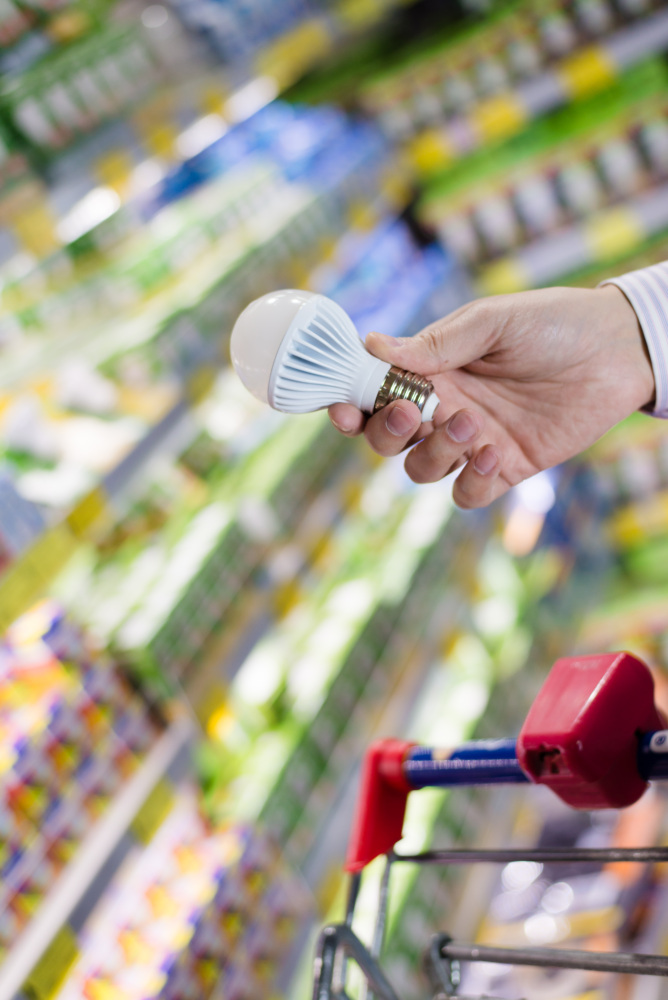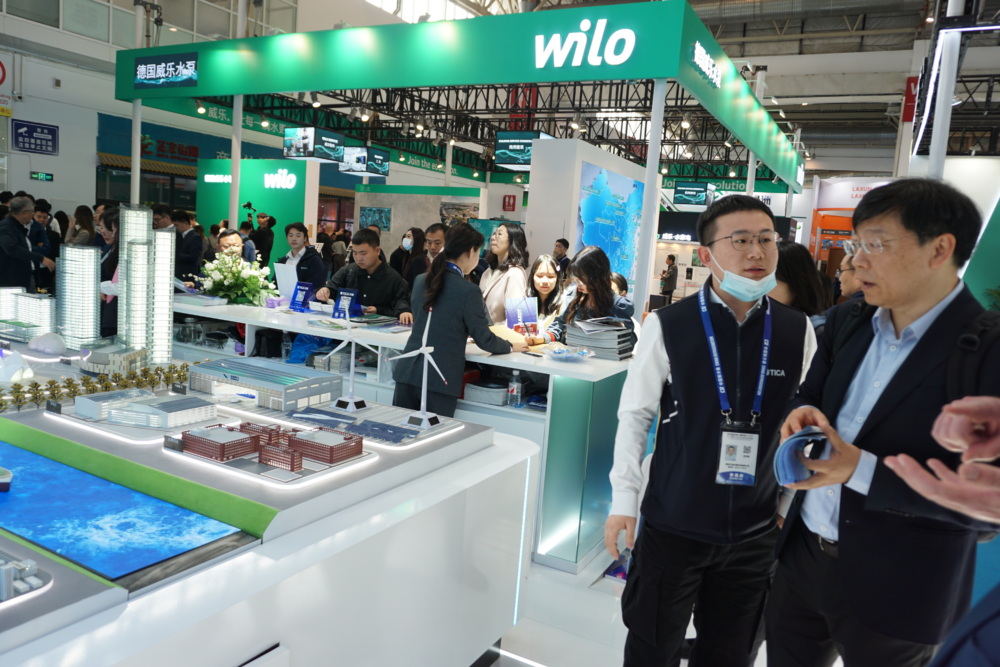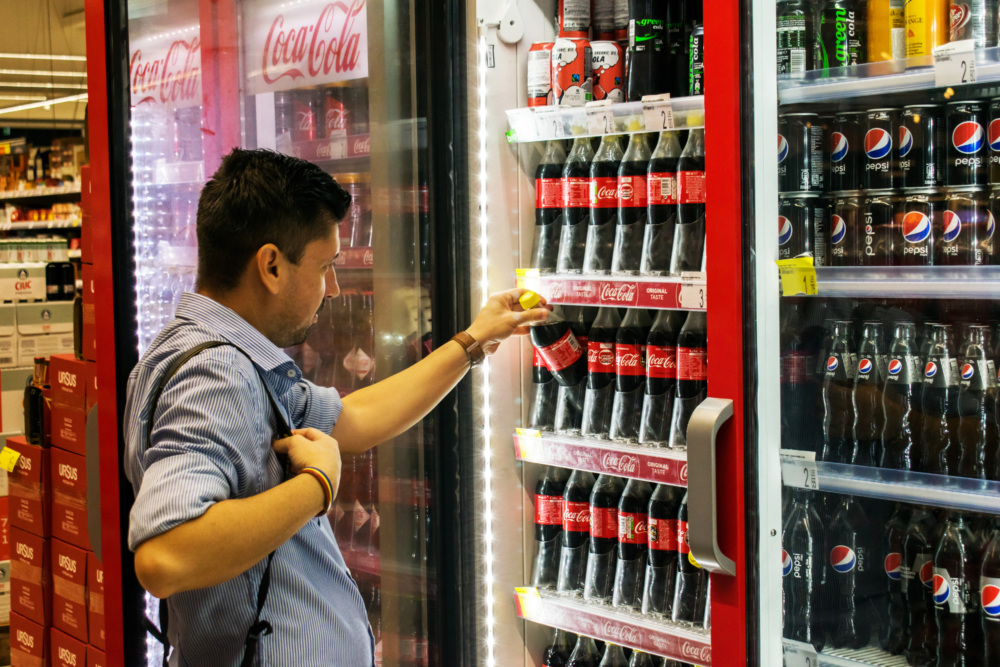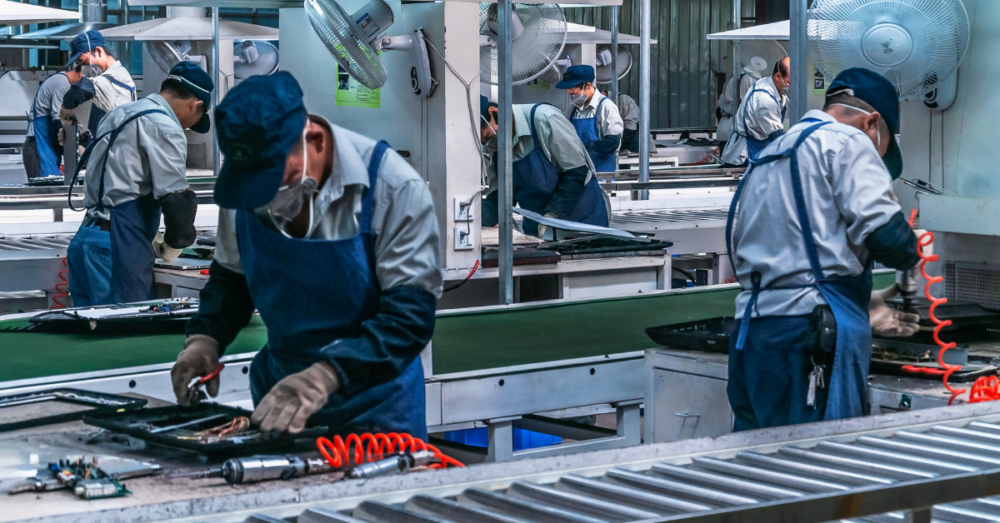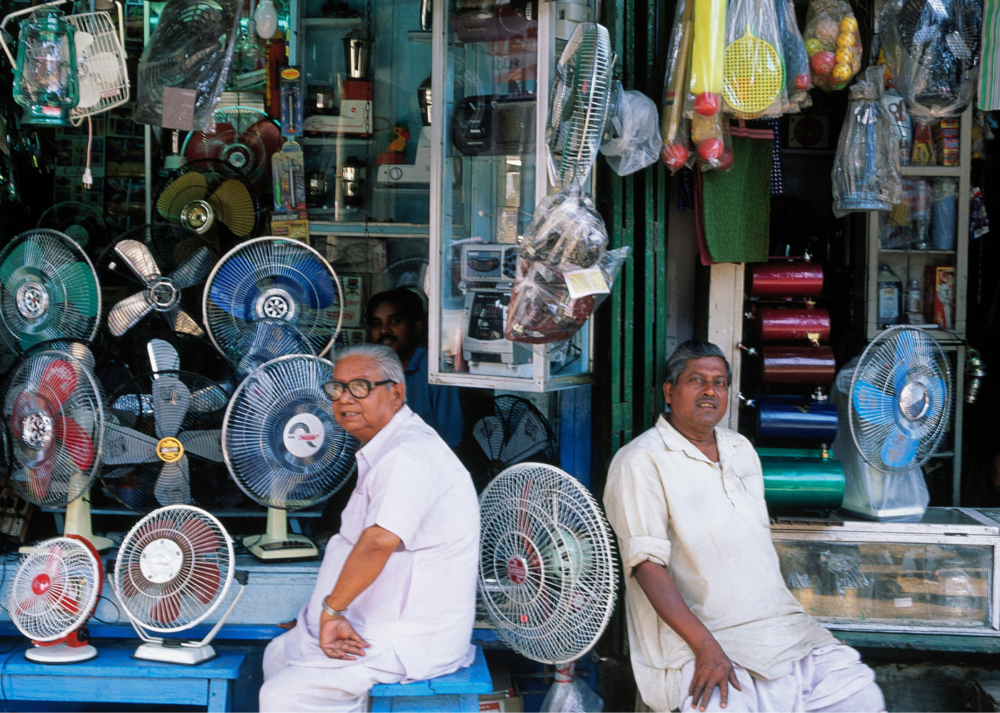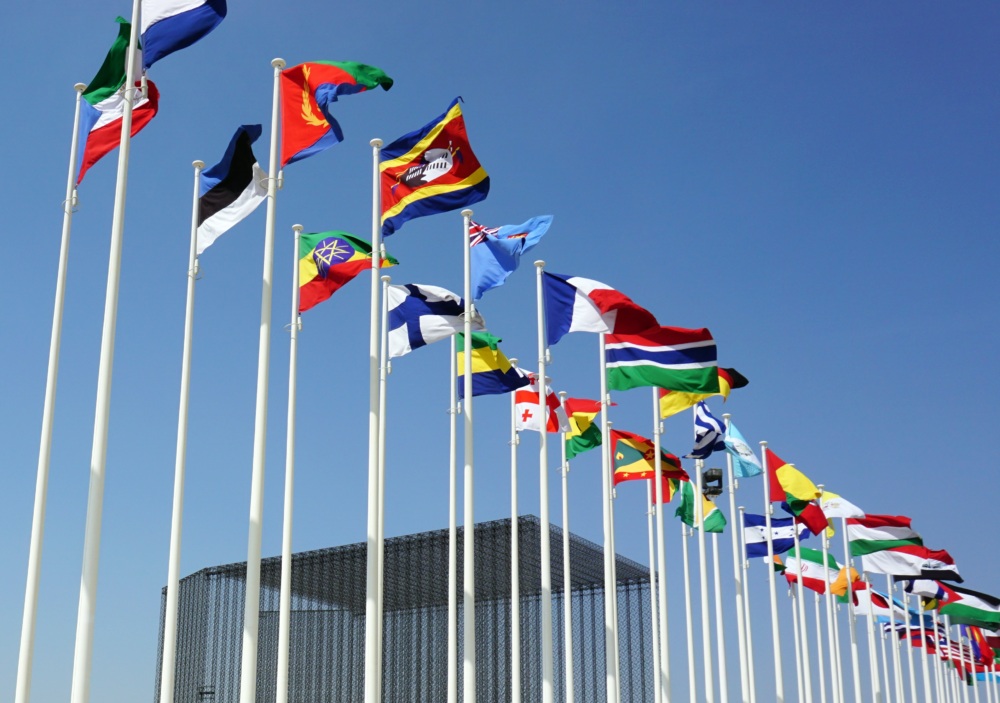Chinese Press Publicizes CLASP’s Assessment of China Energy Label
In June, CLASP hosted a session at the Asia Clean Energy Forum (ACEF) on two analyses geared towards assisting the China National Institute of Standardization (CNIS) to improve China’s appliance energy efficiency program. Following the presentation, CLASP’s Director of China Programs, Steven Zeng (曾磊) was quoted in a press release by China Consumer News (CCN), which was subsequently picked up by over 50 Chinese news outlets, including Xinhua News and Hexun News.
CCN’s press release focuses on the results of a forthcoming study CLASP completed in collaboration with All China Marketing Research (ACMR), which assesses how well Chinese consumers understand the China Energy Label. The study demonstrates that over 97% of consumers polled claimed to have seen the China Energy Label before. This represents an increase of more than 30% over the proportion of consumers who responded to the same question in CLASP and ACMR’s 2010 study on energy label awareness in China, indicating that awareness has increased among consumers. The study also shows that most survey respondents, about 75%, understand how the labels differentiate between efficient and inefficient products.
In CCN’s press release, Steven Zeng stated that “overall, consumer awareness of energy efficiency labeling has increased rapidly.” However, “the survey shows that consumers’ awareness varies significantly across various product categories.” Labels on products that were included in the first generation of the labeling program, such as refrigerators and air conditioners, elicited higher levels of recognition among consumers (87% to 95%) than appliances that entered the program more recently, such as computers and microwaves (10% to 23%).
Additionally, despite most consumers understanding that Tier 1 products are more efficient than Tier 3 or Tier 5 products, approximately 35% of respondents thought that the technical parameters on certain labels were too difficult to understand, such as rated heat input for water heaters or energy efficiency index (EEI) for televisions. CLASP’s China Program Senior Associate, Jayond Li (李佳阳), commented that reducing the number of complex technical parameters on the label would help consumers comprehend and accept energy efficiency labels. The study recommends that the label should incorporate information on actual energy consumption and potential cost savings available from the efficiency of the product.
The study also documents the appliance-using habits of Chinese consumers for nine products – refrigerators, washing machines, televisions, water heaters, induction cookers, rice cookers, microwaves, computers, and air conditioners – which will give CNIS a more accurate estimate of how much energy these products consume.
The full study, forthcoming from CLASP, will help CNIS to further improve the labeling program and ultimately encourage consumers to purchase energy efficient appliances. In collaboration with CNIS and the Asian Development Bank (ADB), CLASP has initiated work to create a communications strategy for this purpose.
Access a full translation of CCN’s press release below, and the original Chinese language version here.
China Consumer News
June 18, 2014
Author: Sang Xue Qi, Zhao Xiong
China’s Energy Label Expects to be Fully Understood
Since it was officially launched on March 1, 2005, China’s energy efficiency labeling program has reached its 10th year of implementation. A survey shows that, through nearly 10 years of promotion, energy efficiency labeling has obtained a higher degree of awareness among consumers. However, the levels of understanding varied based upon different product categories, implementation date, and energy-related parameters on the label. At the International Symposium on Compliance Mechanisms for Energy Efficiency Labeling –hosted by the Asian Development Bank, China’s General Administration of Quality Supervision, Inspection and Quarantine (AQSIQ), and China National Institute of Standardization (CNIS) – experts indicated that easily comprehensible information and promotion activities would help increase Chinese consumers’ comprehension and acceptance towards the energy label.
Market research: awareness varies among different product categories
In August 2004, the State Planning Commission and the State Bureau of Quality Supervision in China jointly issued the “Administration Regulation on Energy Efficiency Label ” and officially launched and implemented the mandatory energy efficiency labeling program.
According to Yanyan Peng (彭研研), Researcher of CNIS’ Energy Efficiency Labeling Management Center, China has published 10 batches of energy labels, covering five major product categories and 28 types of energy-using products. Among those products, home appliances accounted for 43%. Office and electronic equipment accounted for 18%. Lighting products accounted for 7%, and the rest were industrial and commercial equipment. Home appliances covered 12 products categories, such as refrigerators, air conditioners, washing machines, and water heaters.
In May 2013, a survey conducted by China Consumer News, 3G.CN, and Top10 Switzerland showed that energy efficiency labeling has become an important indicator for consumers to compare the performance of energy-efficient appliances. When asked “what indicator you will reference if you are looking for an appliance’s energy efficiency,” 81.35% of consumers chose the energy label as the primary indicator. Among those consumers, 20.68% of consumers believed that energy label plays a critical role in deciding which product to buy and that they make their purchase decisions based on the efficiency level on the label.
CLASP recently conducted a survey on nine major home appliances in the Chinese market. The survey showed that more than 96% of China’s urban residents “know about the energy label.” Lei Zeng (曾磊), CLASP’s China Program Director, said, “Overall, consumer awareness of energy efficiency labeling has increased rapidly.” The percentage of consumers who know that the energy label is an indication of a product’s energy efficiency has increased from 61.5% to 96%. The percentage of consumers who can identify the most energy efficient tier and understand basic energy efficiency parameters has increased from 29.8% from 3 years ago to 55.9%. However, “the survey shows that consumers’ awareness varies significantly across various product categories,” said Zeng. For example, for air conditioners and refrigerators, these products have carried the energy label since 2005 – consumer recognition of the energy label for these two products are 95.8% and 87.3% respectively. For products such as plasma televisions that just recently started carrying the energy label, consumer’s recognition was found relatively lower at 11.2%.
Consumers’ response: technical parameters are difficult to comprehend
Although awareness of energy efficiency labeling seems high, further investigation found that people do not fully comprehend information on the energy efficiency labeling. Ms. Liu, a consumer, asked: “I want to buy an energy-saving air-conditioner. Should I buy one with energy efficiency level one or five?” During the interviewing process, the reporter also found that many consumers asked the same question. CLASP’s survey showed that about 1/4 of the people gave a wrong or uncertain answer when being asked about the correlation between energy efficiency and the efficiency rating on the label.
Meanwhile, the survey also showed that 63.3% of consumers look at not only the energy efficiency rating but also specific parameters on the label when making a purchase decision. “Consumers today are increasingly data-oriented. They would not be satisfied just knowing that a product is energy efficient. They would want to know how much energy could be saved.” In the Dazhong Electronics store in Beijing, an air conditioning retailer commented that energy efficiency parameters on label have become an “important evidence” to persuade consumers. On the other hand, consumers could not fully understand some highly technical parameters. While the retailer was being interviewed, a customer asked confusingly, “What is energy efficiency ratio? What is the difference between cooling season energy consumption and the annual energy consumption efficiency?”
According to CLASP’s survey that focused on the parameters for nine product categories, consumers exhibit a relatively high level of understanding on volume, capacity, water, and other physical parameters. For example, the comprehension rate for the volume of refrigerators and the freezer compartment is about 80%. It shows that consumers are able to comprehend basic physical parameters. For parameter such as power consumption of standby power, the comprehension rate is around 60%. Even for parameters that has the lowest comprehension — output power for instance — the comprehension rate is above 30%. However, for complex energy consumption parameters, the average comprehension rate is below 20%. Additionally, the levels of comprehension for efficiency parameters are generally low, except for thermal efficiency of electric stoves and efficiency for microwaves, whose comprehension rate is slightly over 40%.
The survey also showed that while some consumers claimed that they understand the parameters, they could not correctly answer what those parameters mean. For instance, 69% of survey respondents said they understood “inner container material (metallic or non-metallic)” for rice cookers. However, only 9.5% of respondents correctly answered further questions. Responses were similar for computers. For computer’s “product type” and “typical energy consumption,” 57.3% and 47.1% of respondents respectively thought they understand these parameters, but only 12.8% and 0.8% of respondents answered further questions correctly.
In addition, different efficiency ratings for the same product using different technologies often caused confusion for consumers. Flat-panel TVs, for example, most consumers were not aware that a low-efficiency rated LCD TV may still be more energy efficient than a high rated plasma TV. Choosing between a fixed-frequency air conditioner and an inverter air conditioner that are both rated for level 2, consumers could not tell which product was more efficient.
Experts’ Opinion: Use multiple ways to promote energy efficiency labeling
Energy efficiency labeling and promotion of energy efficient products are a main focus for discussion at the International Symposium on Compliance Mechanisms for Energy Efficiency Labeling. “2015 is the 10th year of implementation for China’s energy efficiency labeling program. The promotion of energy efficiency labeling program is facing a new challenge. In addition to raising people’s awareness about the energy label, we hope that the whole society would understand the meaning of the energy label more deeply and join our efforts in saving energy and reducing CO2 emissions,” said Yanyan Peng (彭研研). To summarize the lessons learned from the past decade and to explore future directions for the energy label, the Energy Efficiency Labeling Management Center decided to launch a series of promotion activities for the tenth anniversary of the implementation of energy-efficiency labeling from 2014 to 2015. Peng said, “The efficiency levels of U.S. Energy Star products are roughly equivalent to the level 1 or level 2 on China’s energy label. There are no complicated parameters on the Energy Star label, so consumer could easily recognize the label when they are buying energy efficient products.” Jiayang Li (李佳阳), CLASP’s China Program Senior Associate, commented that reducing the number of complex technical parameters on the label would help consumers comprehend and accept energy efficiency labels.
Luting Huang (黄璐婷) then presented the new energy label sample designed by Switzerland’s Top10 Energy Conservation Center. The label indicated annual electricity costs, cost savings in comparison to low-efficient products, suitable room size, etc. Haung said, “Consumers care most of the energy efficiency parameters – how much an energy efficiency product could save and what is appropriate usage for a product. Some environmentally-conscious consumers would even pay more attention to the amount of carbon emissions discharged during the product life cycle.” She commented that these energy efficiency parameters are easier for consumers to reference when buying energy efficiency products and would help gain consumer acceptance towards the energy label, thus contributing to the promotion of Top10’s energy saving label.
Huang also believed that, in the era of internet, the promotion of energy efficiency labels needs to be more diverse. For example, the use of a QR code on the label would enable consumers obtain more detailed product information. By scanning the QR code, consumers can log in to Top10’s website for more information on energy saving products.
Additionally, CLASP’s survey shows the retail stores are the main channel for consumers to purchase appliances. Tan Zheng (郑坦), China Program Director of Switzerland’s Top10, believes that governments could strengthen the promotion at the point of sales through increasing training of sale persons, putting up signs and slogans at retailer stores, and distributing brochure and flyers. Top10 has worked with the US retailers to distribute booklets about home energy savings tips.
Interpretation: Improve reliability and increase credibility
Tan Zheng (郑坦) commented, “Since the launch of the Administration Regulation on Energy Efficiency Label on March 1, 2005, non-compliance of energy label has been a major obstacle that weakened consumers’ trusts for the energy labeling program.” In the survey, “Do you Understand the Energy Efficiency Label,” conducted by China Consumer News, 3G.CN, and Top10 Switzerland, only 45.61% of respondents expressed that they trust the energy label when they were asked “do you believe in the energy efficiency label’s credibility and authority?” Among them, only 4.39% said they “completely trust” the label. About 50% of respondents answered “not sure,” “do not entirely trust,” “do not trust.” Zheng said, “China is not the only country facing this challenge. Verification of energy label compliance is an important element of energy efficiency labeling programs around the world.”
Compliance mechanisms of energy efficiency labeling are also a key topic in the International Symposium supported by the Asia Development Bank. The discussion at the Symposium focused on ways to improve China’s compliance for energy efficiency labeling. Experts introduced lessons learned and the best practices of compliance frameworks and policies around the world and also addressed policy recommendations on how to improve policy compliance in China. The Symposium organized three core groups focusing on inverter air conditioners, refrigerators, and flat screen TV to facilitate technical information exchange, introduce test protocols for testing product performance, and receive feedback and suggestions from test organizations.
“In order to improve testing skills, it is essential to align and compare test data among test laboratories. It is also the best way to shorten the gaps between us and advanced laboratories,” said Jianguo Lu (鲁建国), Head of the Testing Technology Center at the China Testing & Inspection Institute for Household Electric Appliances (CHEARI). He further commented that the accuracy of testing relies on testing laboratory, its personnel, equipment, and management system. In order to truly reflect the quality and performance of products, improving human, financial, and physical resources and management at the test laboratories is a necessary step to address non-compliance of energy labeling. According to Lu, “It is hard to imagine that test data produced by different test laboratories showed 30 liters of a difference in a measurement for a 160-liter refrigerator. This indicates the lack of credibility of test resulted from some of the laboratories.” Yanyan Peng (彭研研) commented that CNIS has been verifying the quality of energy efficiency testing laboratories by documenting test reports, conducting on-site verification, and verifying data integrity to ensure laboratories have the capability to undertake energy efficiency testing. In 2010, during the test data consistency verification process, CNIS found that 57 among 384 laboratories, roughly about 13.7%, failed the verification.
Jianguo Lu (鲁建国) pointed out that increasing investment in testing laboratories is imperative while advocating the credibility of energy labels. The development of China’s home appliance industry has matured. Companies compete on products and designs. Product design is supported by a large amount of testing data. Therefore, setting up high-quality testing laboratories would help manufacturers shorten the gap with international leading appliance manufacturers and would also help government regulate market behaviors and identify low-quality counterfeit products. Currently in China, the appliance industry overly exaggerates products’ water and energy savings capability and neglected the correlation between product performance and water- or energy-consumption. Lu believes that a considerable part of this issue is due to the lack of comprehensive test protocols and the lack of knowledge on product performance, causing manufacturers to exaggerate product’s capabilities. Therefore, building performance testing laboratory is the fundamental step to further the development of the appliance industry and to rebuild consumer’s trust for the energy label.
In order to more effectively promote the energy efficiency labeling system and prevent false labeling from misleading consumers, China Household Electrical Appliances Association is currently drafting a self-discipline technical protocol for industry to accurately calibrate key technical parameters.
Available news links:


